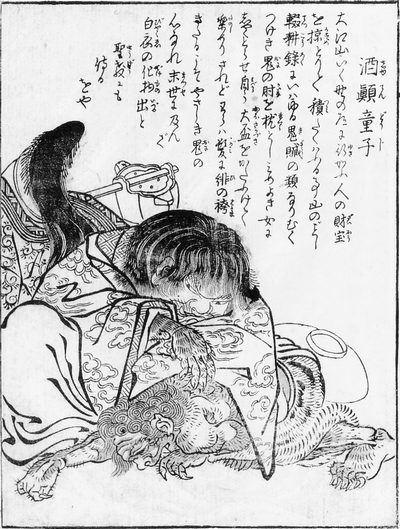
Japan has countless stories with weird and peculiar yokai. But, nothing is stranger in its simplicity than this one. Shirime is nothing butt an eye (puns intended). This faceless yokai is made famous by the creator of GeGeGe no Kitaro, Mizuki Shigeru (水木 しげる).
As the legend goes, a samurai was returning late one night. Suddenly, a man wearing a kimono blocked the warrior’s path. Alerted, the fearless samurai shouted at the strange man. “What do you want?”
Unexpectedly, the silent man stripped off his kimono and bent over. Delberately, he raised his butt towards the samurai. Then, a huge eyeball peeped out of the anus. From that same rear, a bizarre light radiated. Horrified, the samurai screamed and fled in fright.
Only Known Source

Shirime is only mentioned in one ancient source, “Buson’s Yokai Picture Scroll” (蕪村妖怪絵巻). Yosa Buson (与謝蕪村), painted the yokai with a brief description “the bald nopperabo of Kyoto’s Katabiragatsuji”. In turn, this ties to the illustrated Katabiragatsuji (帷子辻) in Ehon Hyaku Monogatari (絵本百物語) by Tosanjin Yawa.
Based on this source, many experts believe that shirime is a form of nopperabo, the faceless yokai. On the other hand, they could be shape-changing creatures such as the mujina, kitsune or tanuki. All of which loves to play mischievous pranks on the locals, as much as kijimuna. Nonetheless, shirime is nothing butt an eye.
Final thoughts
Personally, shirime deserves to be in a class of its own. From his voyeuristic nature to his cheeky behaviour (more puns intended), he is one to behold. Shirime is a testament to Japan’s affinity to the weird and bizarre. Although, if you do travel to Kyoto, keep an eye out for it (last one, I promise).
Yokai Details
- name: shirime ( she-ree-meh )
- kanji: 尻目 ( しりめ )
- meaning: buttocks’ eye
- abilities:
- light generation — create photons of light
- fear projection — cause fear and/or terror on an individual











